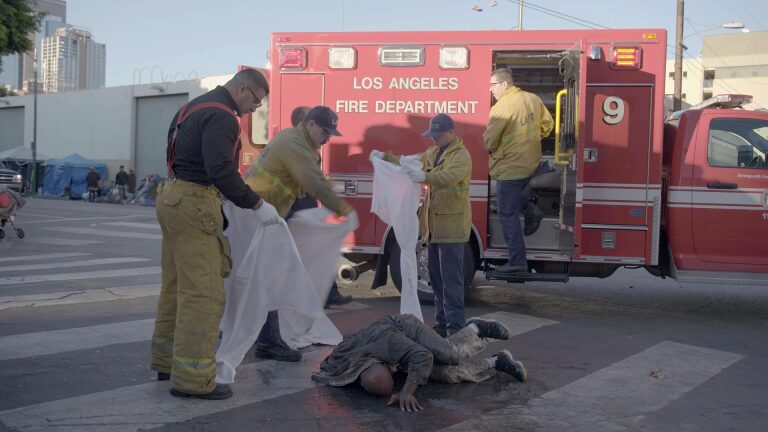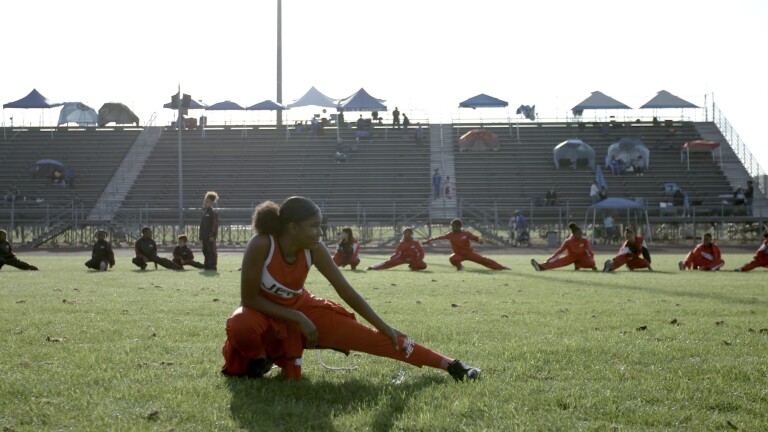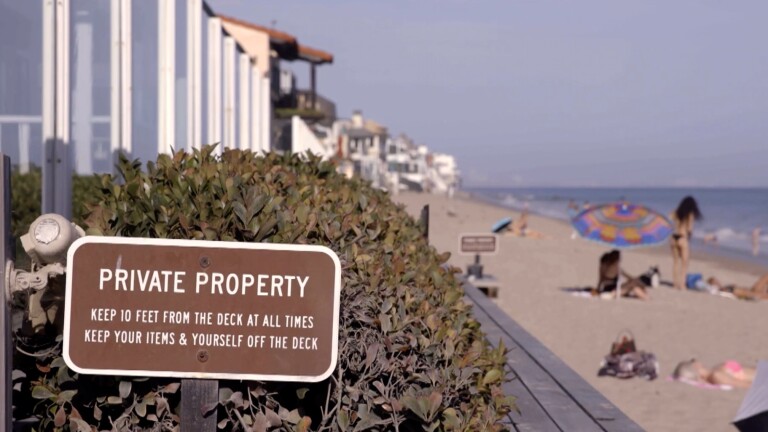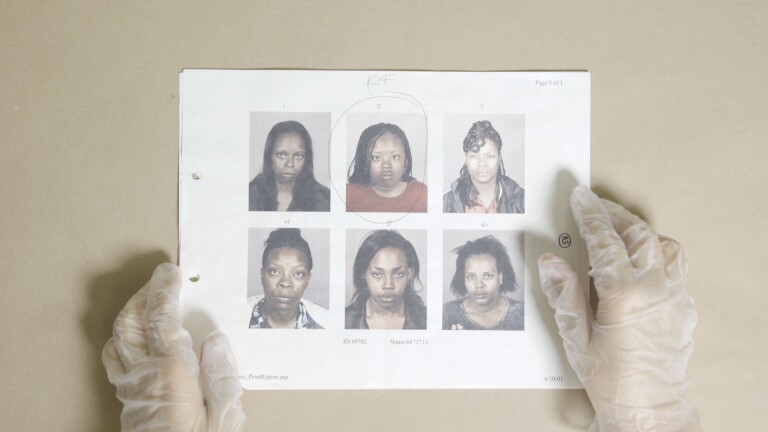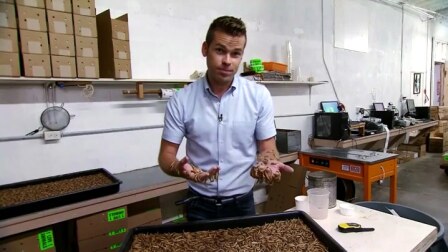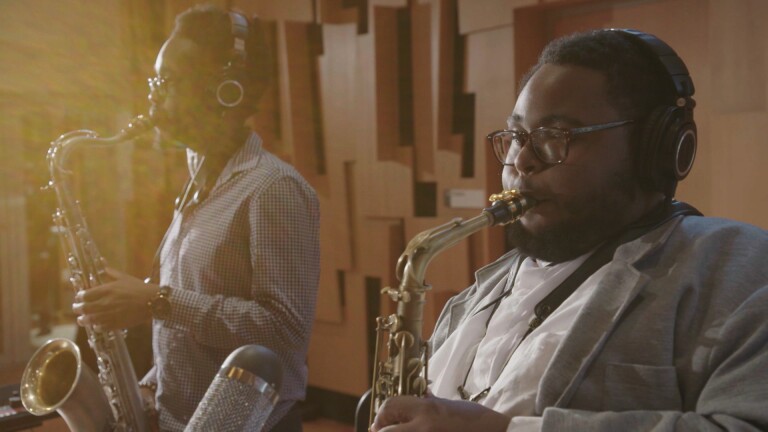
Urban Tree Canopy Benefits LA Communities, Some More Than Others
Meet Brent Green, a modern-day "Johnny Appleseed," who has planted more than 5,000 trees in his lifetime and transformed his neighborhood. He knows first hand how the small act of planting a tree can have a huge impact.
In a special report SoCal Connected explores L.A.'s tree canopy; the 10-million-plus trees that shade more than 20 percent of the city. Trees are a remarkable counter force against the concrete landscape that feeds rising temperatures.
Reporter Nic Cha Kim discovers why our environment and our neighborhoods need more of them. He meets a few of the passionate people who are planting thousands of trees every year.
We ask why some communities are tree "poor" and other tree "rich." We see how a small army of passionate people are working to correct the disparity by giving away thousands of trees to families in tree-scarce neighborhoods. We meet non-profit groups, scientists, political leaders and regular citizens who are turning their love of trees into a quiet but growing social movement that is vital to cooling down our environment, cleaning our air and building communities.
This story is part of a special report exploring tree canopies in Southern California. Learn more about tree canopy coverage and what local organizations are doing to encourage communities to participate in tree planting initiatives at kcet.org/treecanopies. On Saturday, April 23, 2016, KCET’s SoCal Connected team planted trees with volunteers and community leaders at Woodley Park in Van Nuys, Calif. The trees are part of a 20-year study to evaluate the resilience of different species to stressors such as high winds, pests, salinity, drought, and heat.
Quick Links
Tree deaths rise steeply in Sierra; drought and insects to blame
California's Street Trees Are Worth About $1 Billion
Transcript
Nic Cha Kim: In the heart of Mid-City, just north of the 10 freeway…on a quiet street... you'll find a block that's lined with beautiful trees. And they're all here because of the man who lives in this house. His name is Brent Green and when he first moved to Mid-City, the few trees on his block were sick and dying. So he planted new trees on both sides of his street. A few years later, his block is the envy of his neighborhood. So how many trees did you plant on this block?
Brent Green: I planted a lot of them, actually. I planted those over there...the sycamore tree. The two palms...all the trees leading up to this way here.
Nic Cha Kim: And his own house? 10 years ago, it started out like this. Now it looks like this. And his backyard went from this… to this!
Brent Green: This was all dirt when I moved in.
Nic Cha Kim: Unbelievable! Wow! This is like a wonderland!
Brent Green: I'm really glad you like it. This has become my outdoor room. I have a little 1,100 sq. ft. Spanish house in Mid-City and this has become the biggest room in my house.
Nic Cha Kim: Brent estimates he's planted 5,000 trees in his lifetime. That's right, 5,000 trees! So how does one man plant this many trees?
Brent Green: I was a little kid growing up in Leimert Park, with an afro...a little African-American kid liking plants, it wasn't the most... common thing. People would see me gardening, I'd go to nurseries, people were just kinda taken by the notion I was into it. Really into it.
Nic Cha Kim: Brent was so into it, in fact, he didn't mind when his friends made fun of him.
Brent Green: I got called names, and teased, and everything, but I didn't care.
Nic Cha Kim: What did they call you?
Brent Green: Flower boy! (LAUGHS)
Nic Cha Kim: Today, he's got a new nickname -- the modern day Johnny Appleseed. Now, he's a professional landscape designer and horticulturalist.
Brent Green: Dwarf Grapefruit tree over there, dwarf tangerine tree there, lemon tree there, and another tangerine here. We pick fruit all year.
Nic Cha Kim: You don't need a Whole Foods.
Brent Green: I don't need a Whole Paycheck, I don't...
Nic Cha Kim: When Brent turned 35, he decided to take his plan further by planting as many trees as his age. This year, he turned 48, so he's planting 48 trees around his neighborhood. He calls them his birthday trees.
Where do you plant these trees?
Brent Green: You know I plant my birthday trees in between the curb and the city public parkway and the goal is to line the street...
Nic Cha Kim: You're basically creating a canopy for the street?
Brent Green: That's exactly right.
Nic Cha Kim: To get his birthday trees in the ground, Brent relies on help from his neighbors. That's how Brent met Roxie.
Roxie Brusso: He called me. He goes, "hey, Roxie, did you want a tree?" I go, "What do you mean do I want a tree?" He goes, "I have a tree, I have 48 trees I want to plant in the area." I go, "You're kidding!" So, I go, "Of course I want a tree."
Let me talk to my neighbors because I'm sure they need one. That would be great.
Nic Cha Kim: And word spread from there. Ask any neighbors that want one that need a street tree and have the room for one... So you've been helping spread the word?
Roxie Brusso: Absolutely, I sent immediately a huge email.
Nic Cha Kim: But not every neighborhood has a Brent Green. Some blocks are tree rich, while others are tree poor. A comprehensive study found trees cover roughly 21 percent of Los Angeles, well below the national average. And the trees we do have are not spread out evenly. Hancock Park has lush, green streets. Its canopy cover is 37 percent. But nearby Koreatown has only 7 percent. Or, compare Hancock Park to South L.A. The difference is just as dramatic. Parts of the San Fernando valley fare no better.That's where Cindy Montanez was raised.
Nic Cha Kim: You grew up around here?
Cindy Montanez: I grew up in the northeast part of the San Fernando Valley and as you can tell, it's an area that's really doesn't have much of a tree canopy.
Nic Cha Kim: No, but I see some graffiti right here.
Cindy Montanez: This is what you see in areas where you lack tree canopy...
Nic Cha Kim: Cindy was born here. Went to UCLA and was elected to the state assembly. Now she heads the non-profit organization -- Tree People.
Cindy Montanez: Two-thirds of Los Angeles is paved. Now we have to go back and we have to re-think our urban environment, mimic the natural watersheds that we have, mimic the natural ecosystem.
Nic Cha Kim: Tree People’s mission is to make Southern California a lot greener.
Cindy Montanez: So, that means we will go and we will target streets like this that have no trees...and ensure that trees are planted equitably across the entire City of Los Angeles.
Nic Cha Kim: There are about 11 million trees in la and studies show there is room for another million - easy. But how do you get so many trees into the ground and thriving? You start by making trees free.
Liz Skrzat: So who wants to take home a tree to plant in your yard today?
Nic Cha Kim: Liz Skrzat heads up the non-profit, City Plants. They hold tree adoptions almost every weekend in areas that need them most.
Liz Skrzat: The more affluent communities in Los Angeles tend to have a much larger canopy than the less affluent communities in L.A., and so it's really important that we're able to put trees in areas that have the fewest trees.
Nic Cha Kim: So, how many trees are you giving away today?
Liz Skrzat: 200.
Nic Cha Kim: Wow. What kind of trees?
Liz Skrzat: We've got, we have Crate-Myrtle, we have Sweet Shade, Drake Chinese Elm, Fruitless Olive, Native Sycamore, and the Bronze Low Quat.
Nic Cha Kim: This family was happy to adopt a free tree. And this woman chose a guava tree.
Woman: Para me casa, mas bonita, mas verde... mas colorida y welcome me familia... (translation: "so that my house will look prettier, greener and more colorful, just like my family.")
Nic Cha Kim: City Plants also teaches people like me... how to plant trees. Even city officials rolled up their sleeves and joined volunteers. They want to plant 1,800 trees along the Vermont corridor. Councilman Curren Price's district in south L.A. needs more trees. Looks like rain today.
Curren Price: It is and as a matter of fact, I think it's raining for a good cause. We're planting trees and this is a great way to demonstrate we're doing the right thing at the right time.
Nic Cha Kim: Now, what can the city do to improve our green infrastructure?
Curren Price: Certainly, we should be encouraging more of these tree planting activities.
Nic Cha Kim: So what does it cost the city to plant a tree?
Liz Skrzat: So, a tree, by itself, in the ground, is a little over $200.
Nic Cha Kim: But that's only if the ground isn't covered with concrete.
Liz Skrzat: If you want to plant in a low canopy area like this, usually there's concrete. So, we have to open up the well. And, we have to cut the concrete, and that costs over $400, almost $500.
Nic Cha Kim: But studies show that over 35 years a tree provides $1600 dollars in benefits including higher property values and more customers for businesses. It even saves you money by reducing air conditioning bills. That's why the department of water and power has invested in planting trees.
LA Water and Power Commissioner William Funderburk: It helps the people, the people around us. The people benefit because their bills go down. Air condition bills go down. Trees really help reduce the "urban heat island effect" and the environment benefit.
Nic Cha Kim: Trees also help you conserve water. A tree can keep as much as 14-hundred gallons of rain from running off into the street.
Cindy Montanez: There IS no better technology... than that ancient old technology resource that we have of a tree. To capture water, to store water, to clean water, to make sure water is infiltrated back into our groundwater basins...
Nic Cha Kim: Trees also help clean the air of cancer-causing carbon emissions... just one of many health benefits.
Liz Skrzat: They filter asthma-causing pollution out of the air, which means less respiratory issues, they reduce our stress, which means less heart issues, and for reasons scientists can't even begin to explain, pregnant mothers who live in greener areas have healthier babies...
Nic Cha Kim: There are even benefits you might not have thought of...
Brent Green: We actually have a senior lead police officer that's helped us with some of the crime around here. He says crime is down, I think, 35% now, and he attributes that to the tree planting.
Nic Cha Kim: But maybe the most important impact can't be quantified.
Liz Skrzat: To us, this is about what kind of city do we want to leave our kids...
William Funderburk: The health of the kids is what matters.
Liz Skrzat: We can decide not to plant trees and the canopy will decrease because trees age. And, we can hand our kids a concrete jungle. Or, we can plant now and we can hand our kids a sustainable, drought-tolerant, green oasis.
William Funderburk: We're at a time where people want to build walls. Well, we need to plant more trees and not build walls.
Cindy Montanez: This is a social movement. This requires all of us to be engaged. Anybody can learn how to plant a tree, anyone is capable of learning how to care for a tree and maintain a tree. That's what makes our movement so wonderful.
Nic Cha Kim: Back in Brent's neighborhood, his daughter grace, and neighbor roxie have planted a birthday tree. Brent hopes his daughter's generation will continue to cultivate this green movement.
Brent Green: I've just have always believed if you plant the right thing in the right place over time it becomes something really beautiful and can change the environment.
Nic Cha Kim: I’m Nic Cha Kim for “SoCal Connected.”

